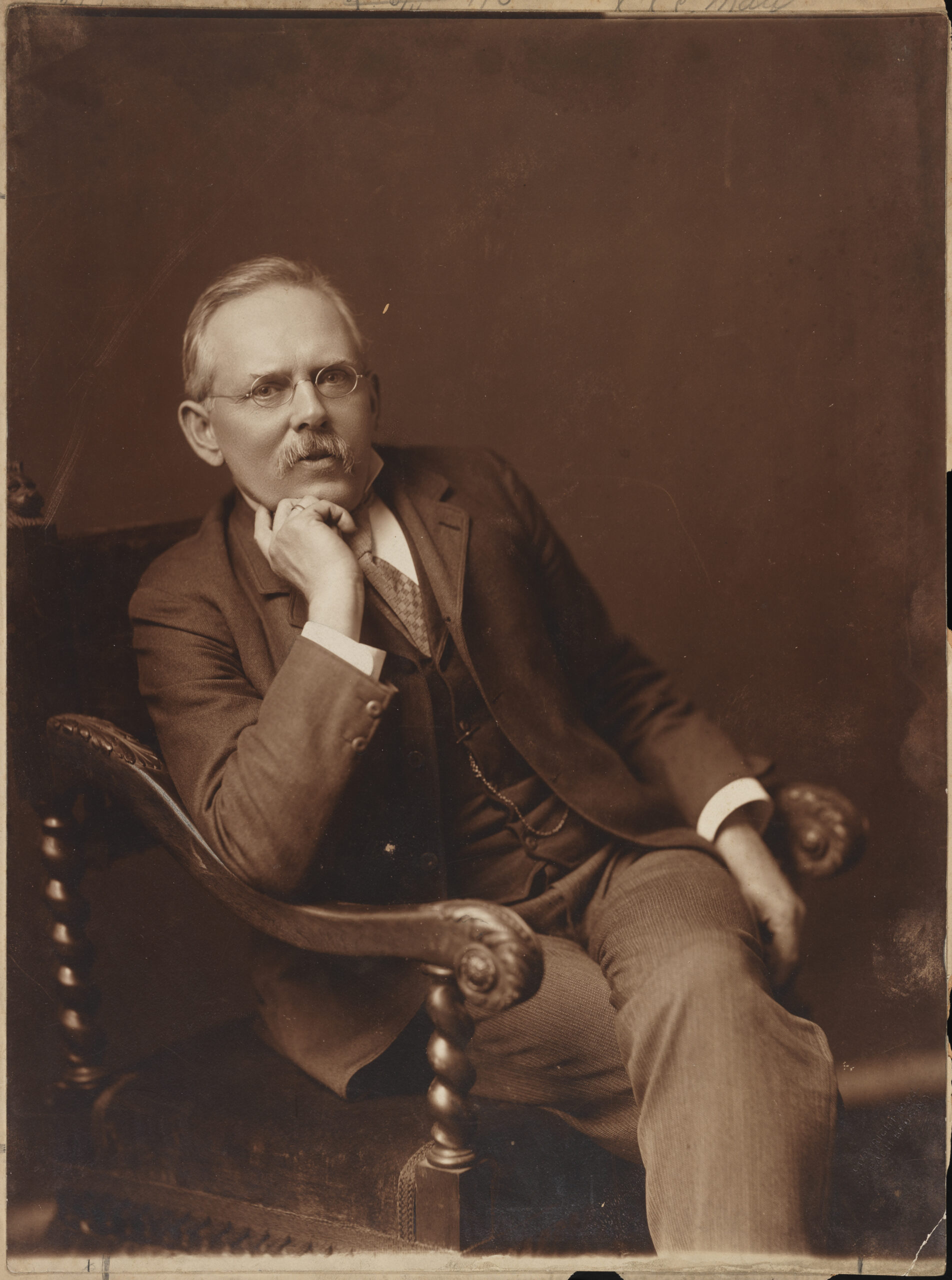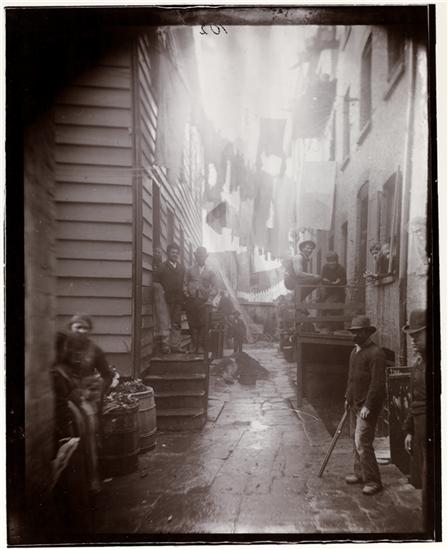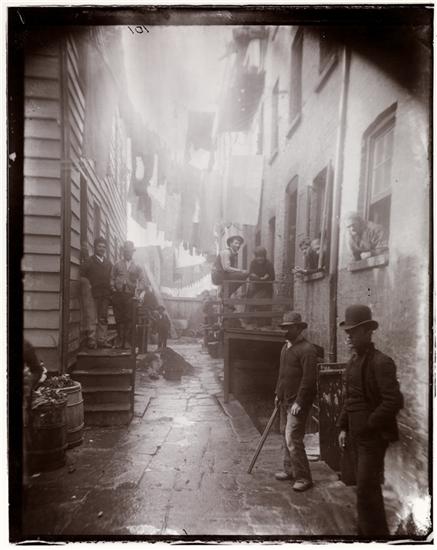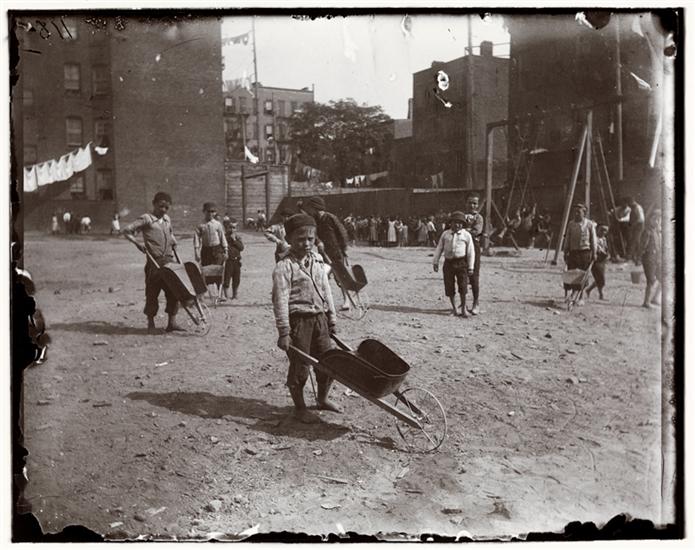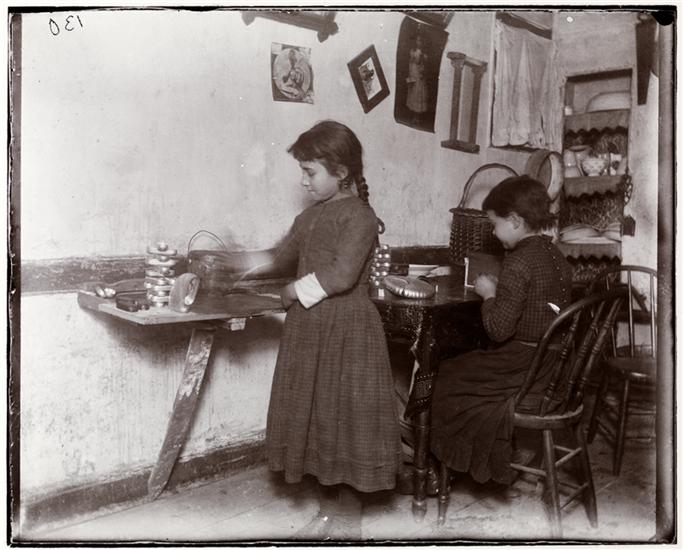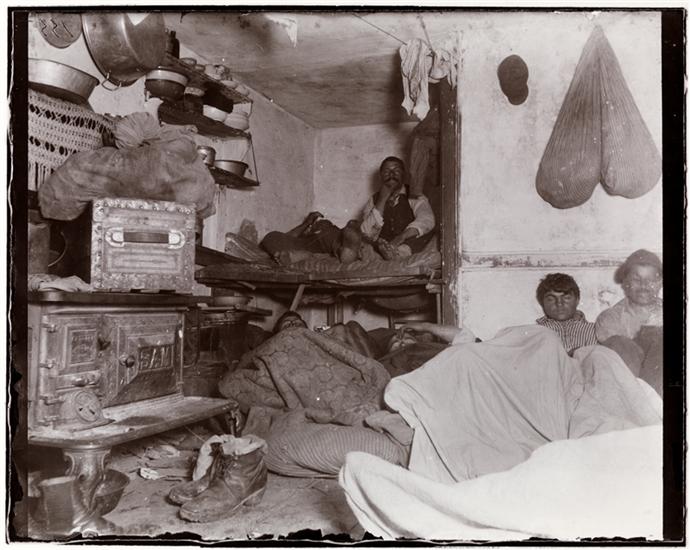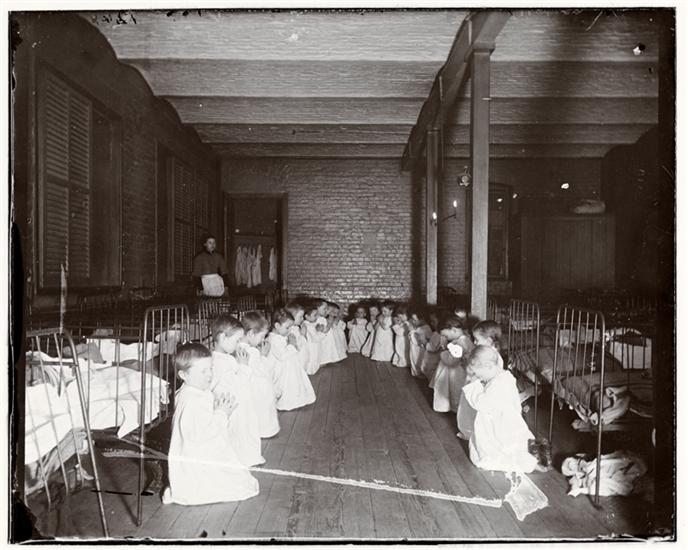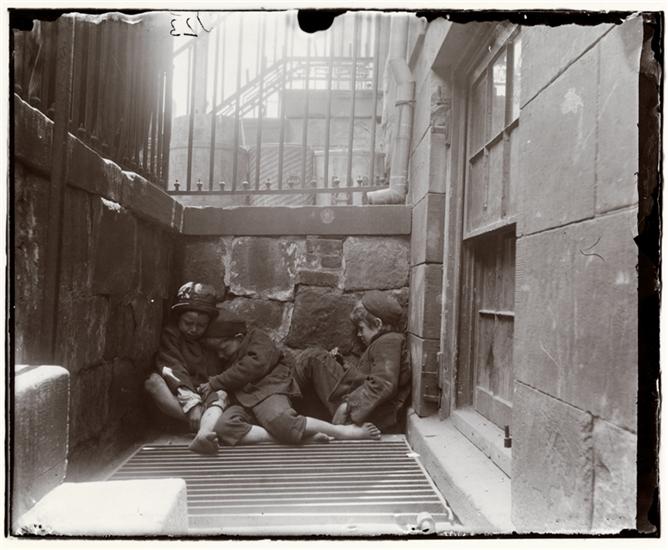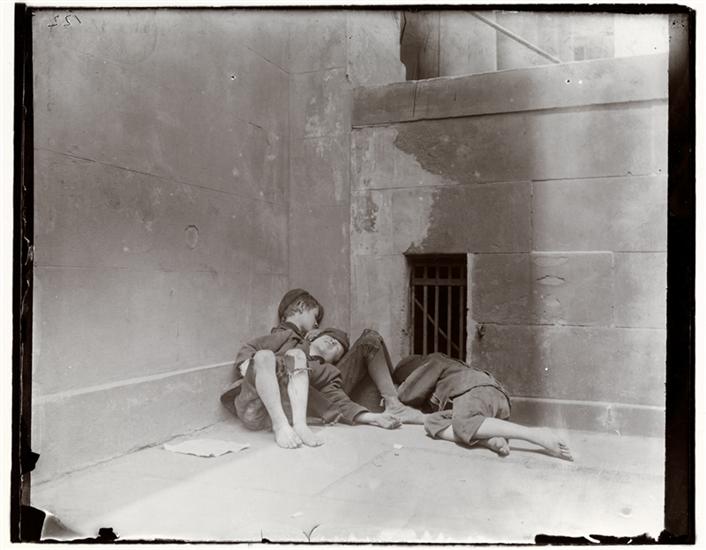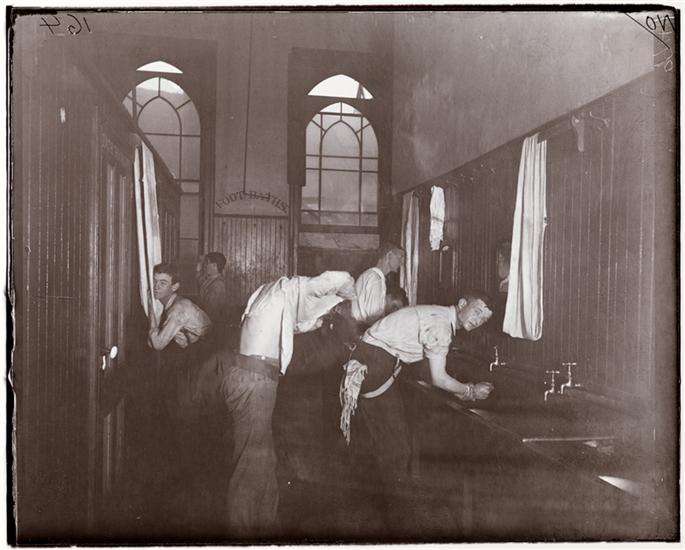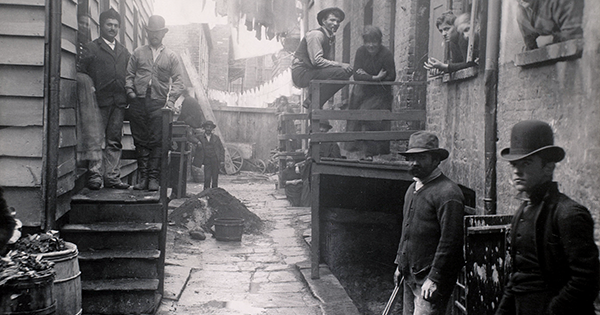
Few places in 19th-century America were as notorious as the teeming Lower East Side of Manhattan. The streets were rife with danger, and the neighborhood’s many immigrants—Italians, Jews, Slavs, and Chinese, among others—crammed inside tiny, rundown tenement houses. Jacob August Riis (1849–1914) emigrated from Denmark at the age of 21 and soon began documenting the lives of the poor, eventually appealing to the conscience of a nation. Taking advantage of recent advances in flash photography, Riis created memorable narrative pictures such as “Bandits’ Roost,” taken on Mulberry Street, in Little Italy, around 1890. The image, in which the formidable characters lining the alley seem no less intimidating than the stern folk leaning out their windows, is now part of a major retrospective at the Museum of the City of New York—“Jacob A. Riis: Revealing New York’s Other Half.” Riis was equally successful as a writer and social reformer (going on to befriend the likes of Theodore Roosevelt), but it is his pioneering work in photojournalism that continues to inform, inspire, and beguile us today.

